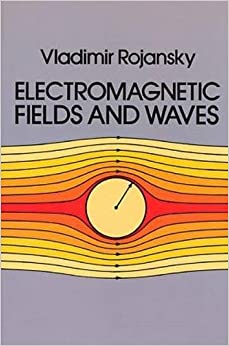Please ensure that all questions are answered, written clear and in order
a) Explain what is meant by "field" and compare the properties of gravitational, electric, and magnetic forces in terms of particles affected, factors affecting the magnitude, and their relative strengths. b) If the force of gravity between a book of mass 0.50 kg and a calculator of 0.100 kgis 1.5 x 10-10 N, how far apart are they? Note: The distance found is between the centers of mass. c) Draw diagrams showing the following: The electric field around a positive charge The electric field between two parallel plates with the upper plate beingnegative The magnetic field around a bar magnet The magnetic field around a horizontal straight current-carrying conductorthat has current travelling to the right d) If the electric force between two charges is 4.2 x 10-2 N, what would the new forcebe if the distance between the charges is doubled and the charge on one of the charges is tripled? e) What would be the electric field (magnitude and direction) of 1.50cm to the right of a charge of -6.5X10^ -6 C f) Two 1.0 kg charges each carry a charge of 1.0 C. How would the gravitational forcecompare to the electric force? (Calculations are not necessary.) g) A point charge has an excess of 5.0 x 10" electrons. What would be the electricpotential at 0.50 m from the charge? e = 1.6 x 10'"9 C) h) A positively charged particle is fixed in place, unable to move. Another chargedparticle is brought near and released, Which way does it move? B) What happens to the force, acceleration, and velocity on the moving particleas it moves? C) What happens to the charges' electric potential as it moves? 1) How is the electric field between parallel plates different from the electric fieldaround a charged sphere? J) There are two situations in which it possible for a charged particle to be in a magnetic field but not experiencing a magnetic force. What are they? (Hint:Looking at the equation for magnetic force will help!) K) Is it true that a magnetic field can cause an increase in the kinetic energy of acharged particle? Why or why not? L) Calculate the speed required for a satellite moving in a circular orbit 550.0 km abovethe surface of the Earth. (mEarth 5.98 x 1024 kg, [Earth = 6.38 x 105 m) M) In an experiment replicating Millikan's oil drop experiment, a pair of parallel platesare placed 0.0200 m apart and the top plate is positive. When the potential difference across the plates is 240.0 V, an oil drop of mass 2.0 x 10"] kg gets suspended between the plates. (e = 1.6 x 1019 c) Draw a free-body diagram for the charge. - What is the charge on the oil drop? Is there an excess or deficit of electrons on the oil drop? How many electronsare in excess or deficit? ") An electron starts at rest and accelerates through an electric field established by a set of parallel plates with a potential difference of 35 V. What is the speed of the electron the instant before it hits the negative plate?(e = 1.6 x 10'9 C, electron = 9.1 x 10" kg) Instead of hitting the negative plate, the electron, travelling East, escapes theparallel plates through a small hole and enters a magnetic field of 0.75 T directed downward. What will be the magnetic force (magnitude and direction) on the charge? Once the electron has entered the magnetic field, it is in circular motion. What is the radius of the electron's circular path 17. a) Upon observing an interference pattern produced onto a screen, how could you identify whether a single slit, double slit, or diffraction grating produced the pattern? b) Distinguish between diffraction and refraction. What is dispersion, and how is it related to diffraction and refraction? c) Would you see the same thin film interference pattern in a film of soap surroundedby air and a film of soap on glass? Why or why not? d) A double slit apparatus is held 1.2 m from a screen. When red light () = 600 nm) is sent through the double slit, the interferencepattern on the screen shows 12.5 cm between the first and tenth dark fringes. What is the separation of the slits? - What will be the difference in path length for the waves travelling from eachslit to the tenth nodal line? e) blue light () = 475 nm) is sent through a single slit with a width of 2.1 um. What isthe maximum possible number of bright fringes produced on the screen? f) A diffraction grating gives a second-order maximum at as angle of 31 for violet light() = 4.0 x 102 nm). If the diffraction grating is 1.0 cm in width, how many lines are on this diffraction grating







